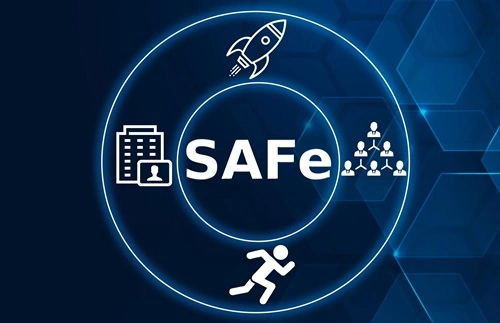Delivering value rapidly while maintaining quality and collaborating across numerous teams provide previously unheard-of issues for modern enterprises. Frameworks that can scale agile concepts beyond individual teams to large companies are necessary due to the complexity of today’s business environment. For professionals who wish to become experts in large-scale agile deployment, SAFe Scaled Agile Training has become an essential tool. The special difficulties that emerge when businesses try to preserve agility while expanding their operations and managing several development streams are addressed by this all-inclusive approach to agile scaling. Anyone hoping to progress in agile leadership, program management, or organizational change must comprehend the subtleties of SAFe training.
1. Timing And Readiness Assessment

Careful evaluation of company situation, career path, and personal readiness are required to identify the most propitious moment of SAFe Scaled Agile Training to achieve the maximum effect of learning and future effectiveness in the profession. An ideal candidate will be one that has worked on cross-functional teams projects and has extensive years of experience in an agile environment and understands essential knowledge of project management. The organizations that have change processes in place provide the best learning environments since the participants can implement their newly acquired skills immediately in practical challenges. Individual preparation is associated with the willingness to achieve participatory approaches to leadership, curiosity regarding scaling methods, and a commitment to continue learning after training.
2. Team Dynamics And Collaboration Skills
Developing advanced team dynamics and collaboration abilities that provide efficient coordination across various organizational levels and functional boundaries is a key component of SAFe Scaled Agile Training. In spite of differing viewpoints and interests, participants gain the ability to manage conflicting priorities among several teams, enable intricate conversations involving a variety of stakeholders, and bring people together around common goals. The SAFe practitioners gain abilities in stakeholder management, consensus-building, and conflict resolution that are extremely useful in intricate organizational settings. Professionals must shift from old command-and-control leadership styles to servant leadership techniques that empower teams while preserving strategic alignment since SAFe is a collaborative framework.
3. Mindset Transformation Requirements
The achievement of a successful completion of SAFe Scaled Agile Training requires an anchoring shift in thinking that challenges the traditional ways of delivering value, the hierarchy, and the project management approach. To gain an understanding of complex organizational dynamics and interdependencies that influence project outcomes, the participants should embrace system thinking, which seeks to transcend the mere cause and effects correspondences. Professionals should shift their priority towards external indicators of value creation and customer satisfaction so as to achieve the results of the training lead in customer-oriented value delivery. Although SAFe requires familiarity with ambiguity, adjustment, and continuous learning during the delivery, the conventional project management methodologies often prioritize predictability and control. Distributed leadership models do away with hierarchies in decision-making and information can readily pass the organizational boundaries and when it comes to making those decisions, they are in the nearest point to the work.
4. Practical Application Strategies
Participants in effective SAFe Scaled Agile training get practical methods for implementing framework concepts in various organizational settings while adjusting to particular structural and cultural limitations. The program places a strong emphasis on practical implementation strategies that take into account practical restrictions including financial limitations, pre-existing technological infrastructure, and established organizational procedures that are difficult to alter right once. With an emphasis on areas where early successes may generate momentum and prove value to skeptic stakeholders, participants learn how to identify high-impact possibilities for first SAFe adoption. Within the program, change management concepts are discussed to help professionals to break the resistance to change initiatives and secure the approval of key decision-makers and influencers. The examples of pragmatic application tactics are developing pilot programs, establishing measurement frameworks, and developing communication strategies that engage interested parties and keep them informed of the progress of the transformation process.
5. Long-Term Career Development Benefits
SAFe Scaled Agile Training positions people for leadership roles in the changing world of organizational change and digital innovation by offering long-lasting career development advantages that go well beyond immediate certification accomplishments. Opportunities for career promotion into executive positions, consultancy roles, and thought leadership positions within the agile community are created by the broad skill set the training develops. SAFe experts often transform into internal change agents, leading transformation projects that create a tremendous amount of value to the organization and become key strategic resources. The skills that are developed in this training are transferable in the field of intricate problem solving, stakeholders management and strategic thinking, irrespective of the sectoral changes or the technological transformations that occur. Industry recognition, professional networks and continuing education opportunities available to SAFe practitioners lead to separate enhancement of expertise and improvement of professional careers.
Conclusion
For professionals looking to progress in agile leadership and organizational change, SAFe Certification in Hyderabad is a game-changing opportunity. People may get the most out of their training investment by knowing when to do it, learning how to work with others, adopting new perspectives, learning useful application techniques, and seeing the long-term advantages. The framework offers the skills and information required to successfully negotiate difficult organizational obstacles and promote significant change that advances individual professional goals and organizational success.








